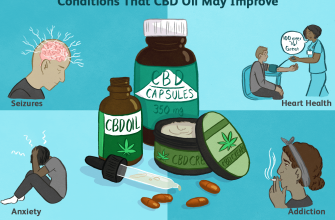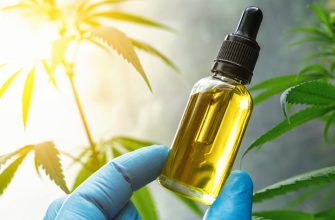Clinical picture of epilepsy
There are a number of epileptic seizures by type. Patients have major convulsions (impaired consciousness, convulsions) or minor convulsions.
However, the most widely used classification today is according to the International League against Epilepsy, which divides seizures into two main groups: partial and generalized.
Partial seizures (focal) begin in a certain limited area of the brain, and their manifestations are determined by the location of this area (the so-called epileptogenic zones). This type of seizure is most common in adulthood and the most common place of origin is in the lobe of sleep. Some patients feel an omen or aura before an attack. The aura often manifests as discomfort in the abdomen, the upper abdomen rising up, as well as sensations that have already been experienced, seen, feelings of alienation, olfactory hallucinations, etc.
Price
Original price before discount€69.90
Price: €39.90
3491.25 ₽
1364.98 ₴
Price
Original price before discount€38.90
Price: €24.90
2178.75 ₽
851.83 ₴
Price
Original price before discount€27.90
Price: €22.90
2003.75 ₽
783.41 ₴
If the attack spreads further, it develops into the so-called partial complex picture, where consciousness is already impaired (partially or completely), the patient performs automatic and ineffective movements (licks, swallows, chews, manipulates surrounding objects, straightens clothes), he can aimlessly continue for more complex activity started before capture. He can even speak, mostly unintelligible, meaningless. Sometimes, on the contrary, physical activity is minimal, and the patient stagnates. Embarrassment, agitation and aggression are no exception after an attack. The patient usually does not remember the convulsions. Even this seizure can spread further and become a "big" seizure, a secondary generalized one. Partial seizures from other lobes tend to be conscious and manifest, for example, with twitches or convulsions on only one side of the body, or even in a specific muscle group from which they can "travel" further.
In a generalized seizure, epileptic activity affects the entire cerebral cortex of both hemispheres. Therefore, the patient immediately loses consciousness. There are more of these types of seizures, the most common seizure in adulthood is seizures. At first, the patient often screams, bites his tongue, falls. The muscles are rigid, do not breathe and turn blue. Gradually appear hoarse breathing, salivation and rhythmic symmetrical twitching in all limbs. At the end of the attack, patients often walk under themselves and remain sluggish and unconscious (or deep sleep) for some time.
Even adults may experience absenteeism (typical of children), characterized by a glance and "blackout". Myoclonic seizures are manifested by involuntary violent twitches of the head, limbs, or the whole body.
Attacks occur day and night and in sleep. One patient may have several types of seizures.
How can cannabis help epileptics?
In principle, the mechanisms of treatment can be observed in the treatment of epilepsy, leading to an improvement in the patient's symptoms. First of all, cannabis is an anticonvulsant (acts against convulsions. For a long time, health professionals have known about the anticonvulsant properties of cannabis. They have even been demonstrated in animal experiments. Even with the use of CBD without psychotropic effects, it is already possible to effectively deal with seizures.
Another benefit is the neuroprotective (protective effect on the nervous system) properties of cannabis. It is believed that epilepsy can be counteracted through the use of cannabis. This is a consequence of the development of the endocannabinoid system of our body. Patients whose endocannabinoid system is unbalanced or otherwise impaired (which may also be genetically predisposed) often suffer from temporal lobe epilepsy, characterized by sensory disturbances of all kinds.
Cannabis has also been found to partially reduce particularly severe seizures and is better than conventional medicine (such as phenobarbital). Patients who regularly fall under "status epilepticus", meaning seizures lasting more than five minutes, may benefit from cannabis treatment.
CBD hemp oil crystalline - hemp seed oil, ...
Price
Original price before discount€30.00
Price: €24.99
2186.63 ₽
854.91 ₴
CBD hemp oil crystalline - hemp seed oil, ...
Price
Original price before discount€42.90
Price: €26.99
2361.63 ₽
923.33 ₴
CBD oil crystalline - hemp seed oil enriched ...
Price
Original price before discount€72.90
Price: €44.99
3936.63 ₽
1539.11 ₴
From theory to practice
Therefore, in theory, cannabis is very suitable for the treatment of epilepsy, especially in severe cases where conventional medicine does not help. This study showed that some people were already able to "treat" themselves, such as an eight-year-old girl who had more than 150 epileptic seizures a day. Although doctors did not expect her to survive the age of 10, she and her family did not lose hope and opted for the "emergency solution" - hemp oil.
Eight year old Tara experienced a huge improvement in all her symptoms. He consumes a small, safe amount of cannabis every day for a year and is now seizure-free, without the side effects of benzodiazepines or other conventional epilepsy medications. Sometimes she suffers from fatigue and loss of appetite. Tara's brother, Sean, also suffered from epilepsy, albeit with milder symptoms, and was able to benefit from cannabis treatment within a very short time.
Source: https://www.hanf-magazin.com/medizin/hanfmedizin-bei-erkrankungen/cannabis-bei-epilepsie-endlich-ein-wirksames-heilmittel/?fbclid=IwAR1FuMBFEaLRNY_C8xAfGJ4IyeRfWB0JIWeyCFGHes6adddQdJHu5Q0xpG8





